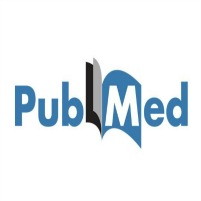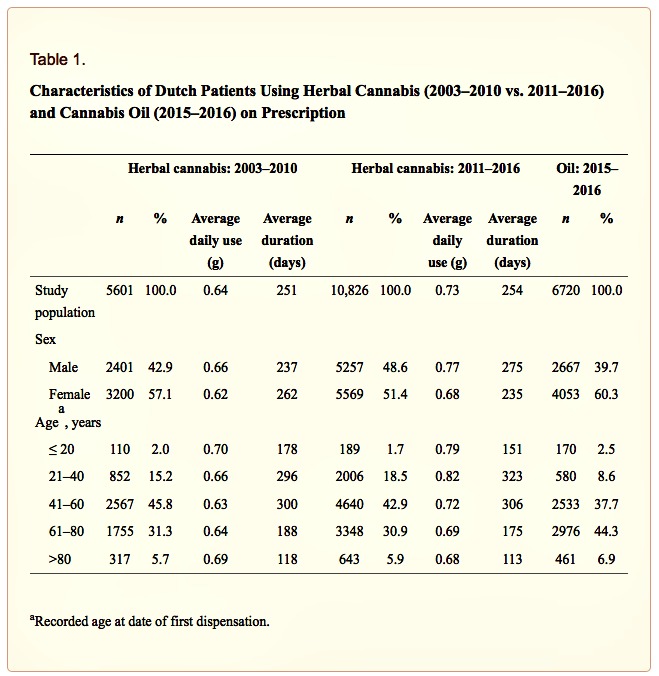
In 2003, the Netherlands started one of the first National medicinal cannabis programs in the world, where patients are provided with pharmaceutical-grade cannabis of standardized cannabinoid composition. The program is overseen by the Office of Medicinal Cannabis (OMC), which is part of the Ministry of Health, while cultivation, packaging, lab testing, and distribution are performed by contracted specialized companies. Medicinal cannabis is available on prescription only and can be dispensed by all Dutch pharmacies. Currently, five different cannabis strains are offered, including THC and CBD dominant varieties, as well as indica and sativa types.1Medicinal cannabis is recommended in the Netherlands mainly for treatment of chronic neuropathic pain, spasms and pain related to multiple sclerosis (MS), lack of appetite/nausea/vomiting related to cancer or HIV/AIDS, therapy-resistant glaucoma, and Tourette’s syndrome.2
 Previously, we analyzed the prescribed cannabis use among Dutch patients for the first time.3 Prescription data were obtained from the Dutch Foundation for Pharmaceutical Statistics (in Dutch: SFK), an independent organization collecting detailed information from community pharmacies, covering over 90% of all prescriptions dispensed in the Netherlands, including cannabis. The existence of a continuous medicinal cannabis program combined with the comprehensive data collected by SFK provides a unique opportunity to learn more about medicinal cannabis use within a long-term stable national program. The main goal of our analysis was to provide physicians and prescribers in other countries, where medicinal cannabis is available, with objective reference data regarding average daily use, duration of use, or age distribution of patients using prescribed cannabis.
Previously, we analyzed the prescribed cannabis use among Dutch patients for the first time.3 Prescription data were obtained from the Dutch Foundation for Pharmaceutical Statistics (in Dutch: SFK), an independent organization collecting detailed information from community pharmacies, covering over 90% of all prescriptions dispensed in the Netherlands, including cannabis. The existence of a continuous medicinal cannabis program combined with the comprehensive data collected by SFK provides a unique opportunity to learn more about medicinal cannabis use within a long-term stable national program. The main goal of our analysis was to provide physicians and prescribers in other countries, where medicinal cannabis is available, with objective reference data regarding average daily use, duration of use, or age distribution of patients using prescribed cannabis.
In our current study, we compare the previously published data covering the period 2003–2010 (period 1; n=34,023 dispensed prescriptions identified) with new data collected for 2011–2016 (period 2; n=95,022 dispensed prescriptions). Results are summarized in Table 1. As shown, the age distribution of patients was very comparable between the two study periods, with patients in the age of 41–60 years making up the largest group. In addition, the average daily use did not change much over the years; in period 1, the study population used 0.64 g of cannabis per day, whereas patients in period 2 consumed an average daily dose of 0.73 g, with remarkably small differences across sexes or age groups. A small shift was witnessed in gender ratio: the percentage of female patients decreased from 57.1% (period 1) to 51.4% (period 2). Meanwhile, the average duration of use (time passed between the first and last dispensed prescription recorded for each individual) showed almost no change between study periods.
Table 1.
Characteristics of Dutch Patients Using Herbal Cannabis (2003–2010 vs. 2011–2016) and Cannabis Oil (2015–2016) on Prescription
In period 1 (covering 8 years), we identified a total of 5601 individuals who received at least one prescription for cannabis. In period 2 (covering only 6 years), 10,826 individuals were identified. The prevalence rate of patients using cannabis on prescription at least once per year was fairly stable from 6.4 (patients per 100,000 inhabitants) in 2003 to 6.9 in 2010, but then it rapidly increased to 24.6 in 2016. Since 2003, cannabis has been prescribed a total of about 170,000 times to over 15,000 patients in the Netherlands (population 17 million).
Until recently, Dutch medicinal cannabis was only available in herbal form (dried cannabis flowers). However, in late 2015, the available cannabis varieties were also made available in the form of concentrated extracts, known as cannabis oils. This led to an enormous increase in dispensed cannabis prescriptions; in the year 2016 alone, the number of patients using oil on prescription (n=6421) already far surpassed those using herbal cannabis (n=4196). Our data (summarized in Table 1) show that patients using oil, on average, were somewhat older and more often female, compared with patients using herbal cannabis. Unfortunately, the prescribed use of cannabis oil was introduced too recently to reliably determine its average daily use or other interesting data.
Based on the data collected, it can be concluded that an increasing number of Dutch patients are using medicinal cannabis on prescription, while the average daily consumption has remained remarkably stable over many years. This suggests the absence of tolerance or overconsumption in this population. In a future study, we hope to include more details about the prescribed use of cannabis oils, such as the preference of patients for THC versus CBD dominant oils for different medical conditions. We believe that our results presented here will contribute to a better understanding of medicinal cannabis use in the Netherlands and abroad and will help physicians and prescribers around the world to make better informed decisions about their own prescribing of medicinal cannabis products to patients in need.
References
References
Cite this article as: de Hoop B, Heerdink ER, Hazekamp A (2018) Medicinal cannabis on prescription in the Netherlands: statistics for 2003–2016, Cannabis and Cannabinoid Research 3:1, 54–55, DOI: 10.1089/can.2017.0059.
Articles from Cannabis and Cannabinoid Research are provided here courtesy of Mary Ann Liebert, Inc.



